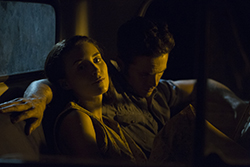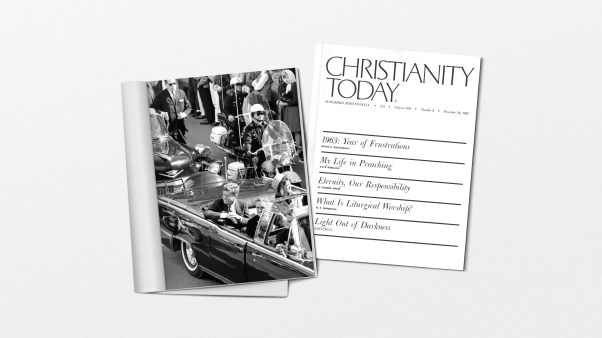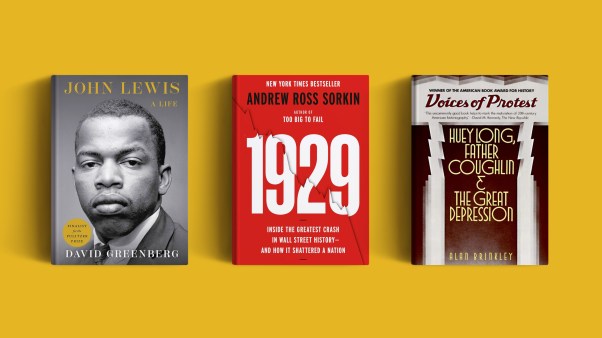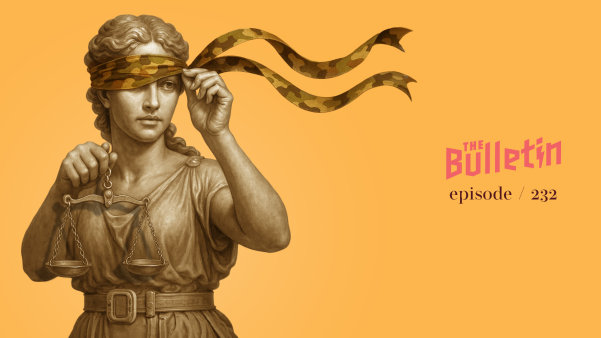All you need for a movie is a girl and a gun—or so French filmmaker Jean-Luc Godard is famously quoted as saying. It's an idea on which many American filmmakers have made their reputations— from Nicholas Ray with They Live By Night (1948) to Joseph H. Lewis with Gun Crazy (1950) to Terrence Malick with Badlands (1973).
It's also the template upon which relative newcomer David Lowery has built his stunning, elegiac ode to the lovers-on-the-run conceit: his latest film Ain't Them Bodies Saints (now open in wider release and available on Video on Demand).
 Steve Deitl / IFC Films
Steve Deitl / IFC FilmsGraciously speaking to me both over the phone from his home in Denton, Texas, and again face-to-face among the pretty people milling about the lobby of New York City's Ace Hotel, the director acknowledged that he was "very consciously" making a film of the girl-and-a-gun variety, which for many American viewers finds its most well-known expression in Arthur Penn's Bonnie and Clyde (1967).
But while Fay Dunaway and Warren Beatty's Bonnie and Clyde slashed a chic bloody streak across rural 1930s Texas in their designer berets and tailored suits in the name of money and headline-grabbing fame, the lovers in Ain't Them Bodies Saints have their sights set on a humbler, yet nobler, purpose: to be together again. Set in Texas in the early-to-mid 1970s, the film opens when Bob and Ruth—played with a sinewy toughness and aching tenderness by Casey Affleck and a plain but resolute earthiness by Rooney Mara—find themselves separated after a botched robbery attempt leads to a violent standoff with the local law enforcement, leaving one officer wounded.
Taking the rap for the robbery and the downed officer, Bob is sent off to prison. But no amount of confinement or distance is going to keep Bob away from Ruth for long, and just how and when Bob will show back up in Ruth's life to whisk her and their baby girl away with him is the question around which the film builds its suspense.
Largely apart from one another the length of the film, Bob and Ruth communicate through letters, which Lowery incorporates throughout the film through their actual text. It's a neat device, and it allows viewers direct access to Bob and Ruth's intimate discourse. Though Lowery admits that epistolary storytelling isn't the sexiest brand of cinema—"There's a saying that the most boring, the most uncinematic image is someone writing, [and] I kind of agree with that," he says—he uses them in Ain't Them Bodies Saints because of the "implication of distance [and] implication of separation" the letters create between Bob and Ruth. (Lowery's inspiration here came from one of his favorite books, Marilynne Robinson's Gilead, an epistolary novel he read not too long before he began writing the film's script.)
With Bob out of sight, both aging crime boss Skerritt (a weathered Keith Carradine whose presence in the film echoes nicely with his performance in Robert Altman's 1974 Thieves Like Us, itself a remake of They Live By Night) and the young wounded Sherriff Wheeler (Ben Foster giving a worn-in weary performance that is more than deserving of year-end recognition) make it their duty to watch after Ruth and the child. And while Wheeler's genuinely caring presence adds a certain amount of emotional complication between him and Ruth, Skerritt's interest in helping Ruth may involve some bad looking dudes who Bob did wrong somewhere down the line.
"I wanted to make a film in that mode [of the lovers-on-the-run genre] and to make a film that honored the tropes of genre, and then both honor what we were doing and also try to tweak it ever so slightly to find out what interested me about it," Lowery says.
 Steve Deitl / IFC Films
Steve Deitl / IFC FilmsAt thirty-two, Lowery, who wears an impressive mustache below calm eyes and a shaved head, is as steeped in cinema's tropes as any veteran filmmaker. Just as comfortable talking about the films of John Cassavetes and Andrei Tarkovsky as James Gray's work, Mr. Lowery is a true cinephile's cinephile—he once flew from Texas to Chicago just to catch a seven hour Béla Tarr film that was screening in 35mm. He's wanted to do nothing other than make films since he was seven years old, when he'd write scripts for films he couldn't actually shoot.
Lowery has had a prolific run up to the release of Ain't Them Bodies Saints. Not only is he a 2012 graduate of the prestigious Sundance Institute, but he is also the director of several lesser-known films—one, the short film Pioneer, stars the actor and musician Will Oldham (known as Bonnie "Prince" Billy). If that weren't enough, Lowery also found time to edit Upstream Color, director Shane Carruth's latest mind-trip and one of this year's biggest successes.
Ain't Them Bodies Saints certainly feels like a film made by someone who has done quite a bit of thinking about films since he was young and who has now finally been given the means to execute his exacting vision. There is an immense care to what's in the frame—the texture of light in the open Texas sky at dusk, the slightly low-angled camera which seems to venerate Bob and Ruth as they're torn apart by the law, the cadence of Sherriff Wheeler's deliberate speech which betrays a man resigned to loving another man's woman.
This kind of intentionality distinguishes Ain't Them Bodies Saints from so many films currently crowding the local cinema that feel sloppily tossed off. In this sense, Lowery's deliberateness of pace and attention to detail make his film downright old fashioned. But that's not to mistake rigor for lifelessness, as Saints manages to breathe in its own way.
Lowery sees the rebelliousness implicit in couple-on-the-lam film as distinctly American. It's a rebelliousness which Lowery suggests stems from the very founding of our country. Whether you agree or disagree with that sentiment, one thing has and will always be constant in the American cinema: to be bad is to be beautiful. (For a taste of this year's offerings see Sophia Coppola's rich-girls-gone-wild The Bling Ring, which conflates crime and celebrity status, or Harmony Korine's Spring Breakers.)
Similarly, Lowery finds common ground between the genre Ain't Them Bodies Saints traffics in and America's reverence for the "whole outlaw mythology." Lowery cites the historical hero worship accorded to the likes of Jesse James and Billy the Kid as examples of the way figures who "were not good people by any means" are nonetheless lionized because "they did things their own way and had an individualist attitude."
Yet Lowery admits that making any direct statement about American identity wasn't necessarily in the front of his mind as he was making the film. Indeed, it wasn't until he took his film to Cannes, where he says the French press put it within an "American "context," that he began "thinking about the movie in those terms with any degree of clarity." During the golden age of the French cinema journal Cahiers Du Cinéma in the 1950s, when the young Godard and Francois Truffaut were cutting their critical teeth, French critics consistently perceived American cinema with keen insight into distinctly-American obsessions. By the time the likes of Godard and Truffaut jumpstarted the French New Wave, the kind of films they were making owed a heavy debt to American gangster and couple-on-the-run films. In fact, both Truffaut and Godard were separately rumored to direct Bonnie and Clyde as their first American films before Author Penn finally took the project.
I suspect that broader explorations of American ideology and identity were latent in Lowery's process because ultimately he has separated his film from the pack of Bonnie and Clyde retreads by being uniquely attuned to the way love between husband and wife, and father and child, has the heft and divine call of the spiritual life. That is, in the end the film is chiefly concerned with the power of love to transcend earthly limits, whether that is the walls of a jail cell or even the possibility of death.
It's a notion that is made remarkably clear in a scene in which Bob recounts his escape from prison. To hear him tell it, there were no walls scaled or tunnels dug—no moonlight getaways over barbed wire with hounds nipping at his heels. Simply, the cell doors opened up and he walked out a free man, past the guards and out of prison because he had higher calling: to love his wife and daughter. His story echoes the one from the book of Acts in which the Apostle Paul and Silas walk out of jail after the supernatural power of God throws open their cell doors and breaks the chains which bind them.
 Steve Deitl / IFC Films
Steve Deitl / IFC FilmsLowery's father is a professor of Catholic Theology at a college in Dallas, and he grew up attending church week in, week out. And so, Lowery acknowledges, Paul and Silas's story was on his mind as he wrote the scene. He says that the idea of bars falling off of cell doors is one that has always stayed with him and that Bob's story is a "riff" on that biblical imagery.
That Lowery is both comfortable with and adept at using allusions to Biblical matters and motifs places him thematically, though not necessarily stylistically, in similar territory as Wim Wenders and Terrence Malick. The Malick comparisons in particular have become a bone of contention among some critics of Ain't Them Bodies Saints, who seem fit to merely compare, either positively or negatively, Lowery's aesthetic to Malick's.
While it's true that some of cinematographer Bradford Young's exquisite photography reminds one of Malick (though to me, the film also calls to mind Vilmos Zsigmond's dark palate in Altman's 1971 Western McCabe and Mrs. Miller), to stop there is to miss placing Ain't Them Bodies Saints in an older tradition, grandfathered by the likes of director Frank Borzage.
Borzage's work in the silent era was a testament to how the still-youngish medium of film was well suited to expressions of intense emotion. He made his name on a series of romances which pitch love between men and women at such an extreme as to be transcendent. In other words, the earthly love between lovers in his films is at such odds with our day-to-day experiences that only by pointing toward the divine can one make sense of it.
A look beyond the lovers-on-the-run genre scaffolding and the occasional Malick quotation reveals Ain't Them Bodies Saints to be a film with similarly lofty aims. But to tell how either Borzage or Lowery go about approaching that ineffable place where human love and spiritual intensity meet would be to spoil the experience of watching their films.
It's enough to say that both Borzage's and Lowery's vision of love as spiritual transcendence is made possible because of cinema's unique ability through editing to collapse space and time—no matter how great the distance or how long the span of time. An adventurous viewer would do well to seek out Borzage's 7th Heaven (1927)—a film in which death itself is put to the test by the strength of love. Make it a double feature with Ain't Them Bodies Saints and you're likely in for a reminder that divine love and grace isn't just stuff of the firmament; it's all of us down here trying to love each other like saints.
Bearden Coleman is Assistant Professor of English at The King's College, where he teaches writing and film. He last wrote for CT Movies about southern film. You can follow him on Twitter at @OZUsCamera.












